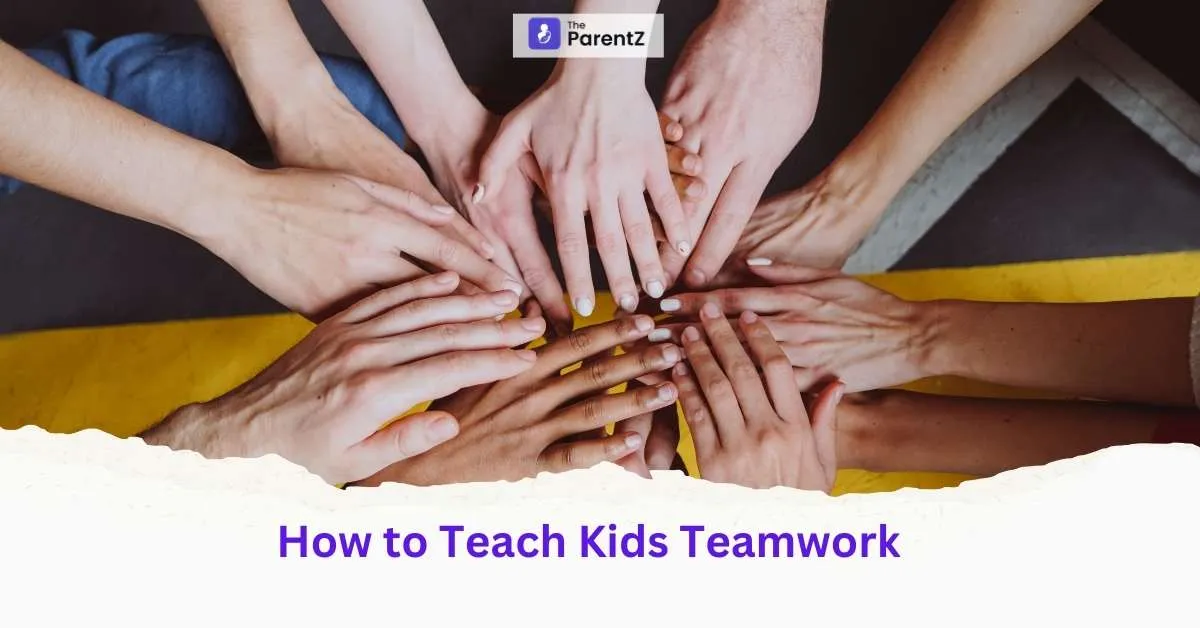Teamwork is an essential life skill that benefits children in myriad ways. By learning to collaborate effectively, kids develop stronger communication, build empathy, and cultivate resilience. Whether it’s in the classroom, on a sports field, or at home, teamwork lays the groundwork for positive relationships and future success. Here is a holistic guide on how to teach kids the value of collaboration and unity.
1. Start with the Basics: Defining Teamwork
When teaching kids about teamwork, begin by clarifying what it really means. Explain that teamwork involves:
- Cooperation: Working together toward a shared goal or objective.
- Communication: Listening actively and expressing oneself clearly.
- Respect: Valuing each other’s ideas, talents, and viewpoints.
- Responsibility: Carrying out one’s assigned role to the best of one’s ability.
Providing real-life examples—such as sports teams, theater crews, or even family chores—helps children see that teamwork can take many forms. You could show them videos or share stories about famous teams (e.g., sports teams, musical bands) to illustrate how different personalities come together to achieve common goals.
2. Model Teamwork at Home
Kids learn a lot by observing adults. Parents and caregivers can set the tone by demonstrating cooperative behavior daily:
- Shared Household Tasks: Assign each family member a role in preparing dinner, setting the table, or cleaning up afterward. Emphasize how every contribution matters.
- Group Decision-Making: Involve children when deciding on weekend activities or selecting a family movie. Show them that everyone’s opinion is valuable.
- Conflict Resolution: If disagreements arise, model calm and respectful communication. Explain to your child how you listen to each other’s viewpoints and find a solution that works for everyone.
By consistently modeling teamwork, children internalize the idea that cooperation is a natural, effective way to achieve goals.
3. Use Playful Activities to Demonstrate Cooperation
Kids often grasp concepts more quickly when they’re engaged in fun, hands-on activities. Consider games and exercises that require collaboration:
- Treasure Hunt: Organize a simple indoor or outdoor treasure hunt. Split the children into small teams, give them clues, and emphasize that they can only solve the puzzle if they share information.
- Building Challenges: Provide materials like blocks, popsicle sticks, or LEGO bricks. Assign each child a role—one might be responsible for planning, another for gathering materials, and another for construction. They’ll learn to coordinate tasks, communicate effectively, and celebrate shared achievements.
- Group Art Projects: Hang a large sheet of paper on a wall and give each child markers or paints. They must create a unified mural or drawing together, discussing the theme and color scheme so that the final artwork is cohesive.
Through these activities, kids quickly realize that success is much easier when everyone pitches in and listens to one another.
4. Encourage and Teach Effective Communication
Teamwork falters without clear, respectful communication. Help kids develop better listening and speaking skills:
- Active Listening Drills: Pair up children and have one person talk about a favorite hobby while the other listens. Afterward, the listener repeats what they heard to ensure accuracy. This exercise underscores the importance of paying attention and clarifying if something is misunderstood.
- “I” Statements: Teach kids to use “I feel” or “I think” instead of “You always” or “You never.” This approach reduces defensiveness and fosters more productive discussions.
- Positive Feedback: Encourage them to offer compliments or constructive feedback to peers. Let them see how uplifting or helpful comments can boost morale and improve team cohesion.
By strengthening their communication skills, children become more empathetic team members who can navigate disagreements responsibly.
5. Assign Roles and Responsibilities
In group activities, each child should have a specific role. When kids see that everyone has a part to play—and that each role is important—they’re more likely to collaborate instead of competing with one another. Roles might include:
- Leader/Facilitator: Oversees the activity, ensures everyone’s ideas are heard, and keeps the group focused on the goal.
- Note-Taker/Reporter: Records plans, ideas, and decisions, then reports progress.
- Materials Manager: Responsible for gathering, distributing, and returning all resources used in the task.
- Timekeeper: Monitors the clock to make sure tasks are completed within a set timeframe.
Switch roles frequently so each child gains experience in different capacities, reinforcing that every part of a team’s effort matters equally.
6. Celebrate Team Successes—Not Just Individual Achievements
Praise is a powerful motivator for children. While individual achievements deserve recognition, it’s also crucial to celebrate group milestones. Encourage children to cheer each other on and acknowledge one another’s contributions:
- Group Awards: After a team activity or project, present a shared reward (like a certificate that says “Best Team Effort” or “Collaboration Champions”).
- Reflective Discussions: Ask questions like, “What did you learn from working together?” and “How did your teammates help you?” This process boosts self-esteem and reinforces cooperative values.
- Public Display: If it’s a classroom project, display the group’s work prominently. Highlight that the final result was a collective achievement.
When children see that shared victories are valued as much as individual accolades, they become more invested in helping others succeed.
7. Address Challenges and Conflicts Constructively
No matter how well a team functions, conflicts will arise. Teaching kids to handle disagreements maturely is a vital part of teamwork:
- Open Dialogue: Encourage kids to air grievances calmly and respectfully. Listen to both sides without judgment.
- Identify Common Ground: Find aspects of the problem on which both parties agree. This can be a stepping stone to resolving bigger differences.
- Work Toward Solutions: Guide children to propose compromises or solutions. They can brainstorm ways to meet in the middle or take turns.
- Revisit Team Goals: Remind them of the shared purpose—whether it’s finishing a group project or winning a friendly game. Often, recalling the collective goal helps them unite again.
Managing conflicts effectively helps children build resilience and maintain positive team dynamics, even under pressure.
8. Integrate Teamwork Lessons into Everyday Life
Teamwork isn’t just for structured projects or games. It can become a consistent part of daily routines:
- Household Responsibilities: Assign siblings joint tasks, such as cleaning the playroom or sorting laundry. Emphasize how working together finishes the job more quickly.
- Community Involvement: Encourage group activities like neighborhood clean-ups or charity events. These experiences teach kids that teamwork has a positive impact beyond their immediate circle.
- Sports and Clubs: Joining a sports team, a robotics club, or a dance group provides natural opportunities to practice cooperation, share ideas, and tackle obstacles collaboratively.
By embedding teamwork into everyday life, kids view cooperation not as a special occasion but as a valuable skill for all situations.
Conclusion
Teaching kids teamwork is an investment in their social, emotional, and intellectual development. Through clear communication, role assignments, conflict-resolution strategies, and consistent praise for group accomplishments, children learn that achieving goals together is both rewarding and fun. Most importantly, they gain life lessons about empathy, respect, and collaboration that will serve them well into adulthood. As parents, educators, and mentors, fostering a spirit of unity in children equips them with tools for success in any arena—whether in the classroom, on the playground, or out in the wider world.








Be the first one to comment on this story.